Top dressing of tomatoes in the greenhouse throughout the season: what fertilizers and when to apply after planting seedlings
So you are interested in how to increase the yield of your tomatoes, namely, you want to know how and what to feed tomatoes in the greenhouse during the season: after planting seedlings before flowering, during flowering and during the period of active fruiting.
Below you will find information on how to properly feed tomatoes in a greenhouse, which fertilizers are best used from planting seedlings to harvesting.
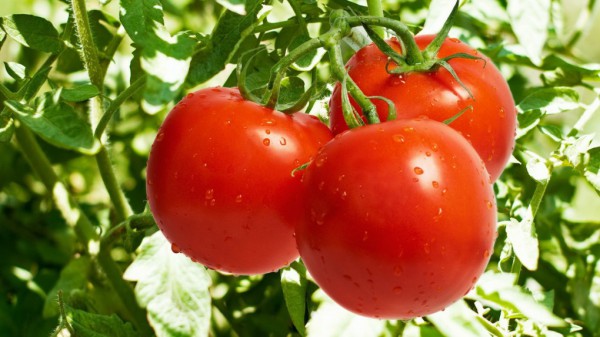
Content
How to feed tomatoes in a greenhouse: basic methods and rules
It should be understood that tomatoes need to be fed as needed. In other words, if you have properly filled the soil with nutrients during the preparation of the garden (or put it in the hole), then most likely you will not need any additional fertilizing.
However! If the plant begins to signal that something is missing, then you have no choice: you need to fertilize, and as soon as possible.
Next, we will consider the main signs of a lack of nutrition, as well as the main methods (types) and rules for feeding tomatoes.
When tomatoes urgently need feeding - signs of a lack of macro- and micronutrients
Sometimes in the process of development, tomatoes themselves indicate a lack of a certain element in the diet. This is expressed by characteristic external signs (as a rule, it is on the leaves).
- Lack of nitrogen... Plants begin to lag behind in growth, stretch out, the foliage becomes smaller and acquires a pale green color with a yellow tint, the stem becomes thin and soft.
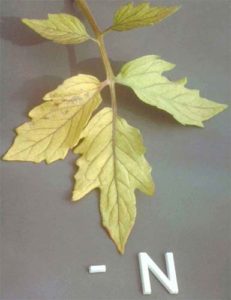
- Lack of phosphorus... The plant as a whole darkens, or rather, its leaves acquire a bluish tint with purple veins, and can also wrap inward.
By the way! More details about the reasons why the leaves of tomatoes can curl, you can find in this article.
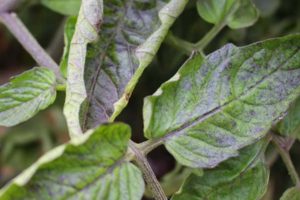
- Lack of potassium... Expressed curling the tips of the leaves and a characteristic brown border along their edges (they also say that what happens marginal burn).
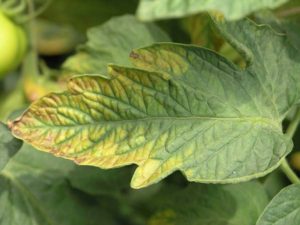
- If not enough zinc, then the leaves become very fragile and rough (rough) and can also curl downward, and orange-brown chlorosis forms on old leaves.
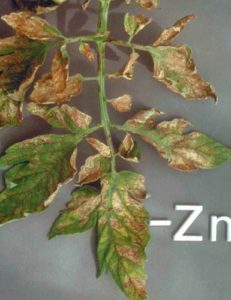
- If not enough borathen leaves brighten and again curl.
- With a lack copper and sulfur, young leaves usually wilt, and then may acquire a bluish-green color and curl upward (into a tube).
- Disadvantage calcium manifested in the fact that the leaves veins turn white, and they themselves curl up.
Note! More details about the reasons why the leaves of tomatoes can curl, you can find in this material.
- With a shortage gland - leaves turn yellow and sag, while also sometimes twisting.
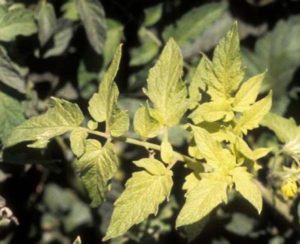
- Disadvantage magnesium.
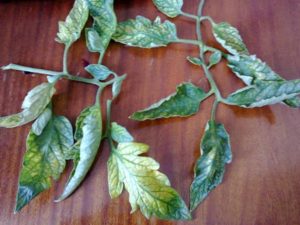
In this case, you need to spend top dressing with a certain macro or microfertilizer or complex microfertilizer, for example, Gumat +7 or similar.
Video: lack of nutrients in tomatoes and the causes of leaf curling
Feeding methods
There are 2 ways or types of feeding any plant (including tomatoes):
- root (watering at the root);
- foliar or leaf (by leaves).
Root dressing imply the application of fertilizer directly under the root of the plant, as a rule, in liquid form (i.e. a solution is prepared first = granular or liquid fertilizers are dissolved in water). Most often in this way they make macronutrients.
Although you can also apply fertilizers first dry (special wood ash), and then water.
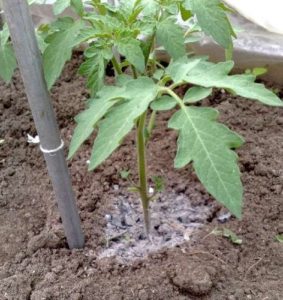
Concerning foliar (leaf dressings), then they are used as additional, since they are most effective when the plant especially needs certain trace elements (which manifests itself in its appearance), in other words, they are carried out as needed.
Although sometimes the leaves are fed with complex fertilizers such as calcium nitrate (nitrogen + calcium).
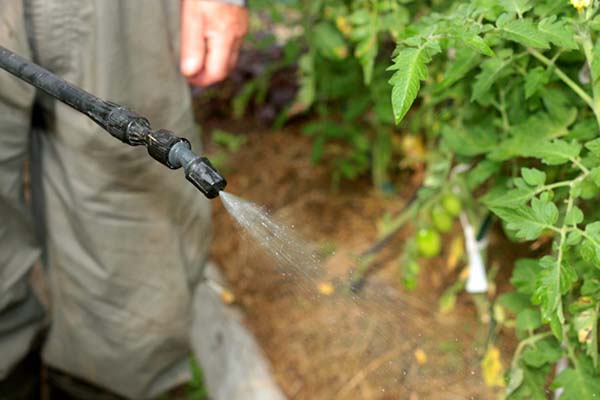
Interesting! Foliar feeding increases the digestibility of fertilizers during critical periods of growth and development, thereby compensating for the deficiency of macro- and microelements and improving the efficiency of fertilization (increases the availability of other nutrients, especially against the background of nitrogen application).
Feeding rules
- For feeding, you should choose morning or evening hoursor daytimeif worth overcast.
- Top dressing is very convenient combine with watering.
Directly before applying mineral fertilizer in any case you need watersince it is always recommended to feed it on wet soil.
- Exemplary consumption of liquid fertilizers for 1 plant - about 0.5 liters.
- Top dressing is best done regularly, every 7-14 days, in order to constantly feed the plant (you can do this more often, while necessarily reducing the concentration of fertilizer).
By the way! Tomatoes begin to consume food from the soil especially intensively when the third brush is tied and the fourth begins to bloom. It is during this period that it is necessary to start actively feeding tomatoes with potassium fertilizers (with the addition of calcium, magnesium, bora), and doing this every 5-7 days.
Scheme for feeding tomatoes in a greenhouse: what fertilizers and when to use
Like all plants, tomatoes require a whole range of macro- and microelements, namely: nitrogen, phosphorus, potassium, and especially magnesium, calcium, boron, iron, zinc and other micronutrient fertilizers.
There are three main stages of feeding tomatoes in a greenhouse: after planting in the ground (before flowering), during flowering and ovary formation, and during fruiting.
As a result, you need to make about 5-7 root dressings and 1-2 foliar dressings (per sheet):
- nitric - under the root (you can skip and go directly to the next).
- nitrogen-calcium - under the root or on the leaves.
- nitrogen-phosphorus-potassium top dressing or phosphorus-potassium.
- spraying with boron on leaves and flowers.
- nitrogen-calcium - on the leaves (if necessary).
- potassium-nitrogen feeding.
- potash top dressing.
- potash top dressing.
- potash top dressing.
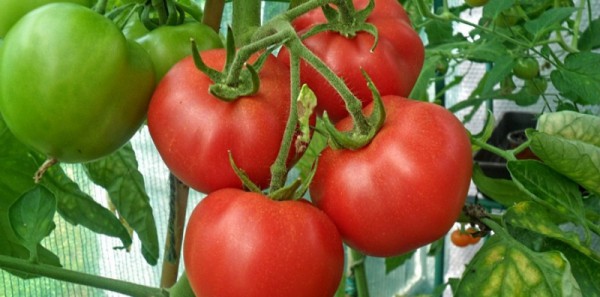
After planting in the greenhouse: before flowering and during budding (beginning of flowering)
The first feeding after planting tomato seedlings in a greenhouse it is recommended that after 10-14 days.
At this moment, tomatoes, as a rule, need fertilizer that can positively affect the activation of the growth of green mass, the growth of new and strong shoots, i.e. on the formation of a strong skeleton of the bush, which in the future will be able to withstand a strong load of fruits.
Most often, you can notice clear signs that the plant needs nitrogen feeding due to the fact that it will have a rather poorly developed top (it will be thin).
So, what fertilizers are suitable for the first feeding of tomatoes after planting in a greenhouse?
As nitrogen mineral fertilizers for feeding tomatoes you can use the following:
- ammonium nitrate (30-40 grams per 10 liters of water);
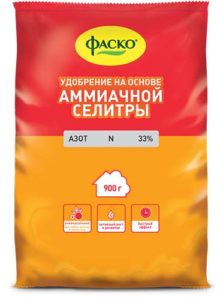
- urea (20-30 grams per 10 liters of water).
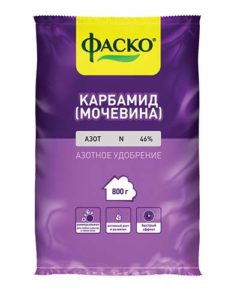
Worth knowing! Ammonium nitrate is a faster-acting fertilizer than urea.
If you are a supporter organic agriculture, then as nitrogen fertilizers for the first feeding of tomatoes, you can apply the following:
- poultry or chicken droppings (usually diluted 1 in 20 with water);
By the way! In the purchased granulated chicken manure, there is not only nitrogen, but also almost the entire complex of macro- and microelements.
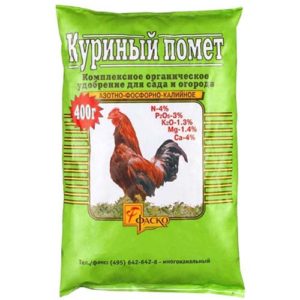
- infusion of mullein (most often diluted 1 to 10);
- green fertilizer (nettle infusion, also 1 in 10).
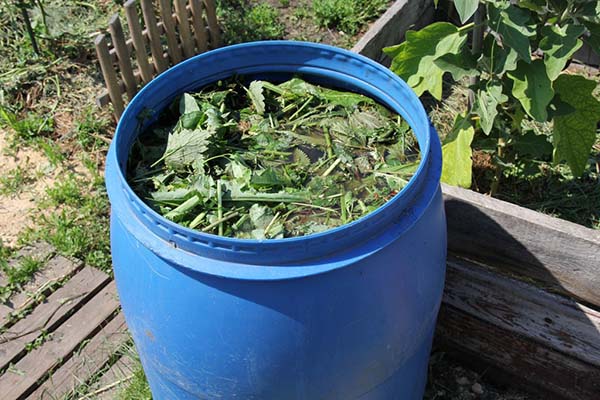
Note! You cannot bring fresh manure under the tomatoes, as well as, in principle, overfeed with nitrogen fertilizers, otherwise, to the detriment of fruiting, the plant will form a vegetative mass, bush (there will be abundant growth of stepsons) and fatten.
However, in addition to purely nitrogen fertilizing, it is even more efficient to use before flowering and / or after fruit setting such complex fertilizer as calcium nitrate, which contains nitrogen - 14.9%, calcium - 27%.
Calcium is primarily necessary for tomatoes so that the plant can receive nutrition faster and easier, in other words, for a more intense metabolism between the root (underground) and aboveground (green) parts of the plant.
Also calcium fertilizers used for preventing top rot of fruit.
By the way! You can do both root and foliar feeding with calcium nitrate, i.e. spray on the leaves.
The solution for feeding is prepared in the following proportion: 10-20 grams of calcium nitrate is dissolved in 10 liters of water.
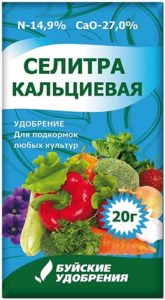
However! The introduction of calcium nitrate blocks the normal absorption of phosphorus. The same goes for slaked lime and wood ash (it contains not only a lot of potassium, but also calcium). Therefore, it is advisable to add calcium in the fall or spring (for digging - during the preparation of the garden), or do foliar top dressing.
Better yet, if you add to ash solution 9% vinegar (200 ml per 10 liters) so that calcium does not block phosphorus.
Video: how to feed tomatoes 10 days after planting
For the full growth and development of tomatoes also phosphorus is especially important (moreover it had to be introduced into the soil before planting seedlings or directly when planting in a hole).
Phosphate fertilizers contribute to better root development, faster flowering and faster ripening of fruits.
Therefore, after the first nitrogen or nitrogen-calcium fertilization, you can perform the second complex nitrogen-phosphorus-potassium feeding, eg, nitroammophos (all elements are 16% each).
Video: the second important top dressing of tomatoes
During active flowering and ovary formation
To help tomatoes set the maximum number of fruits, especially if the weather is unfavorable during their flowering period (for example, very hot or cool), tomatoes should be sure feed boron, and having drawn exactly foliar feeding (by leaves).
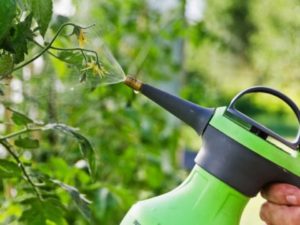
As a means for feeding tomatoes with boron during flowering, you can use:
- boric acid (5-10 grams per 10 liters);
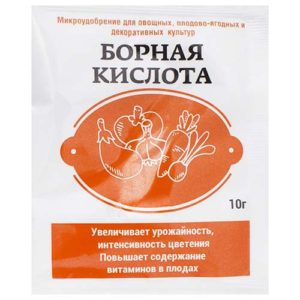
- special preparation Boroplus.
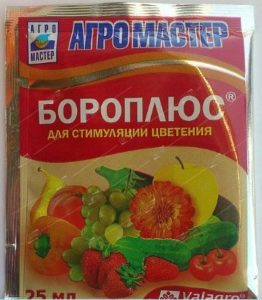
- And there is also such a complex mineral fertilizer as Borofoska (but it is better to bring it in in the spring and for digging).
Borofoska also contains phosphorus (10%), calcium (20%), potassium (16%), magnesium (2%). In other words, all the nutrients necessary for tomatoes.
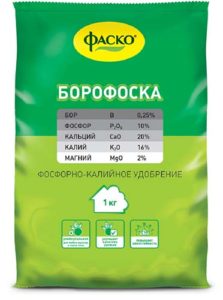
Video: feeding tomatoes during boron flowering
Many gardeners already during this period recommend the first feeding of tomatoes. potassium (potash) fertilizer.
By the way! The most popular organic potash supplement is solution wood ash (100-200 grams per 10 liters of water).
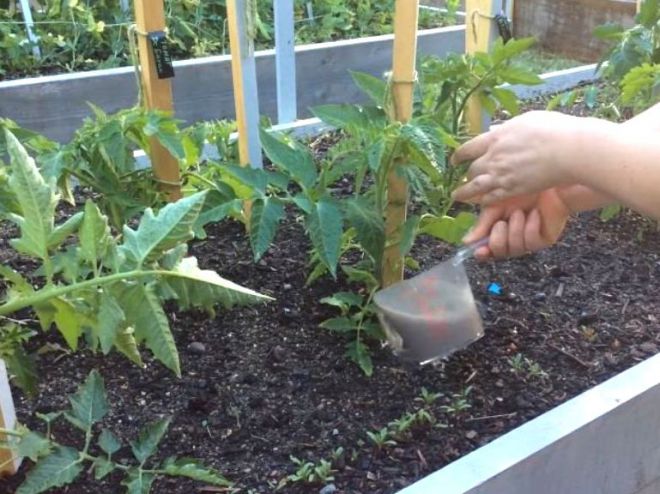
Video: the first feeding of tomatoes after planting with ash (potash fertilizer)
As for mineral fertilizers, at the beginning of flowering as complex nitrogen-potash feeding tomatoes you can use potassium nitrate (20-30 grams per 10 liters of water), which contains: nitrogen - 13.6%, potassium - 46%.
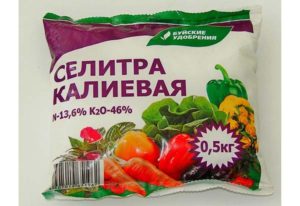
Advice! But in the future, it is better to use pure potash fertilizers without nitrogen. Although, if you have not previously applied an excessive amount of nitrogen fertilizers (the plants are not overfed with nitrogen), then even during the fruiting period, you can use potassium nitrate as the main potassium-nitrogen subcortex.
During the period of fruit filling and fruiting
During the growth of the fruit, the nutrient requirement of tomatoes changes, and the composition of the fertilizing carried out should be changed accordingly.
During this period, it is especially important for them to get a sufficient amount potassiumas well as some nitrogen and phosphorus.
Thus, during the fruiting period of tomatoes in a greenhouse, in order to accelerate the ripening of tomatoes and to improve their taste, it is recommended to carry out regular fertilizing high in potassium.
Also, do not forget about such important trace elements as calcium, magnesium, boron.
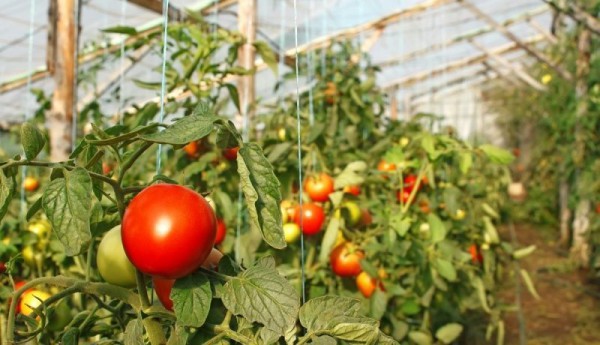
Important! The nitrogen content when feeding tomatoes during fruiting should be minimal, because nitrogen during this period will contribute to an excessive build-up of green mass (tomatoes will begin to fatten, they will form thick stems) and delay the ripening of fruits.
However, nitrogen cannot be completely excluded, since it must support the growth of vegetative (green) mass.
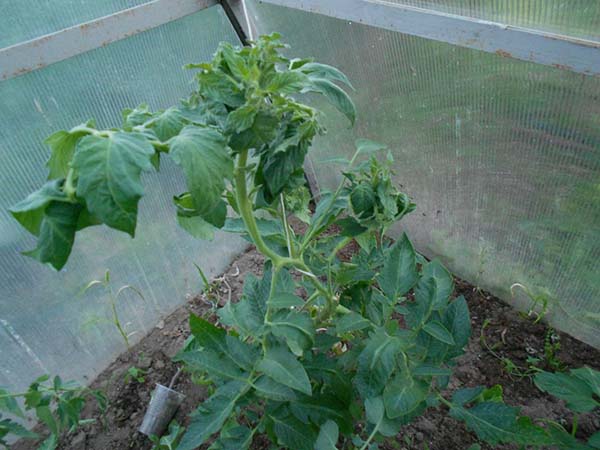
As potash fertilizers tomatoes in a greenhouse during fruiting (pouring fruits) the following are suitable:
Note! Some fertilizers contain phosphorus, but this is okay, because unlike nitrogen and potassium, the plant cannot be overfed with phosphorus.
- Wood ash (100-200 grams per 10 liters of water);
Interesting! Ash contains a high amount of not only potassium, but also such important trace elements as sulfur, iron, magnesium, boron, manganese, molybdenum, sodium, calcium and others.
Worth knowing! Ash is, of course, an excellent fertilizer for plants, especially on acidic or slightly acidic soils. However, if you have an excessively alkaline soil (pH - 7-8 and above), then in this case it is better to make foliar feeding on the leaves or not use at all wood ash.
- Potassium nitrate (20-30 grams per 10 liters of water);
13.6% nitrogen and 46% potassium.

- Borofosk (15-20 grams per 10 liters);
It also contains phosphorus (10%), calcium (20%), potassium (16%), magnesium (2%). In other words, all the nutrients necessary for tomatoes.

- Kalimagnesia (15-20 grams per 10 liters);
Kalimagnesia (kalimag) contains, in addition to potassium (about 26-28%), also magnesium (about 8-9%).
By the way! As magnesium fertilizer you can use magnesium sulfate or nitrate.
- Potassium monophosphate (10-20 grams per 10 liters of water);
Potassium monophosphate is the fastest and most easily digestible form of phosphorus-potassium fertilizer (phosphorus - 50%, potassium - 33%).
However, the cost of such fertilizer will be quite expensive, besides, tomatoes do not need such an amount of phosphorus. Although, if your soil is rather poor, then you can use it.
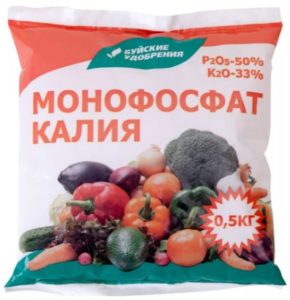
Video: feeding tomatoes during fruiting is important to increase the yield
It is also very good to feed the tomatoes with various humates, especially when it comes to potassium humate... Moreover, it (potassium humate) can be mixed with others mineral fertilizers.
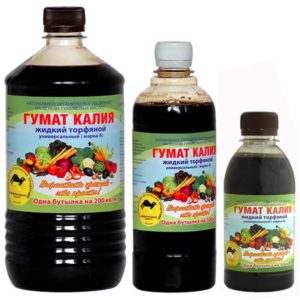
Or you can use Humate +7 with trace elements.
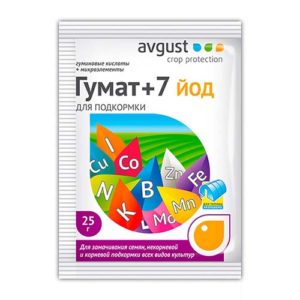
Specialized fertilizers for tomatoes
Of course, if you do not want to bother with the selection and preparation of certain fertilizers, then the easiest way is to feed them with special fertilizers for tomatoes (which are also suitable for peppers and eggplants). As a rule, they already have all the macro- and microelements necessary for the culture (all should be applied and diluted according to the instructions on the packages):
- Agricola for tomatoes, peppers, eggplants.
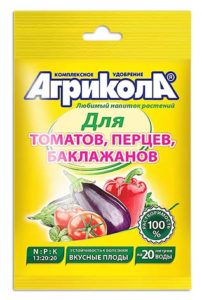
- Baby from Fasco "Tomatoes, peppers, eggplants."
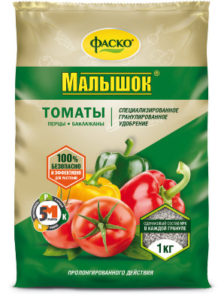
- Gumi-Omi "Tomato, eggplant, pepper".
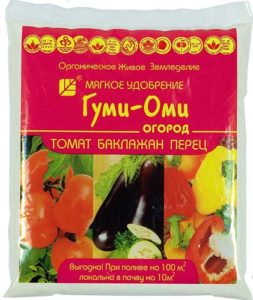
- Hera for tomatoes, peppers and eggplants.
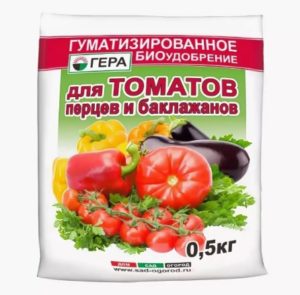
- And many others.
Answers to the most popular questions about feeding tomatoes in a greenhouse
In general, all the answers have already been given above, but if you want to get answers to specific questions, then here they are.
How to feed tomatoes in a greenhouse so that they are plump?
Naturally, all gardeners dream that tomato seedlings, after planting in a greenhouse, take root as quickly as possible and enter the fruiting phase.
But if the seedlings have a thin elongated stem, then you can not count on a good harvest. Therefore, it is so important that during the active growing season they receive adequate nutrition and grow plump stems that can withstand the load of the future harvest.
In order for the tomatoes in the greenhouse to be plump, they should be fed 10-14 days after planting nitrogenand also better nitrogen-calcium fertilizers, in other words, it is:
- ammonium nitrate, urea (you can directly on the leaves), calcium nitrate, bird or chicken droppings, mullein, green fertilizer (infusion of herbs, usually nettle).
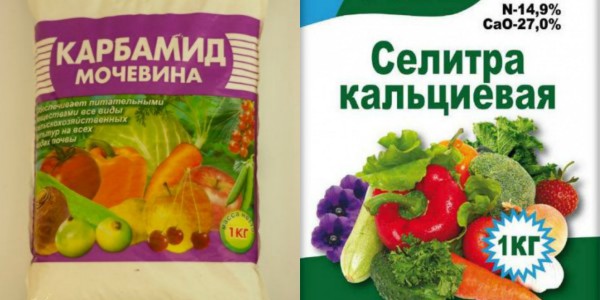
How to fertilize tomatoes during flowering so that there are more ovaries?
The root will help you with this, and preferably the foliar (leaf) feeding tomatoes boron... It is boron that will help tomatoes set the maximum number of fruits, especially if there is unfavorable weather during their flowering period (for example, high temperature).
Thus, as a means for feeding tomatoes with boron during flowering, you can use:
- boric acid (5-10 grams per 10 liters);
- special preparation Boroplus.
And also such special preparations, as "Tomaton" or "Ovary" (it happens like for tomatoes, So universal - for all cultures).
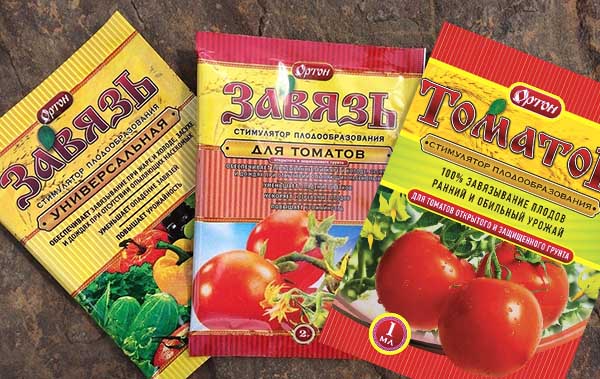
How to feed the tomatoes so that there is no top rot of the fruits?
To prevent top rot of fruit use calcium fertilizers. So, before flowering and / or after fruit set can be used such complex fertilizer as calcium nitrate, which contains nitrogen - 14.9%, calcium - 27%.
By the way! You can do both root and foliar (leaf) dressing, i.e. spraying.
How to feed tomatoes to ripen faster?
Potash fertilizers are your choice. Exactly thanks to potassium your tomatoes will rather to mature and be filled with colors.
As for specific fertilizers, these may be the following:
- infusion solution wood ash (100-200 grams per 10 liters of water).
- potassium nitrate (20-30 grams per 10 liters);
- potassium magnesium (15-20 grams per 10 liters);
- potassium monophosphate (10-20 grams per 10 liters).
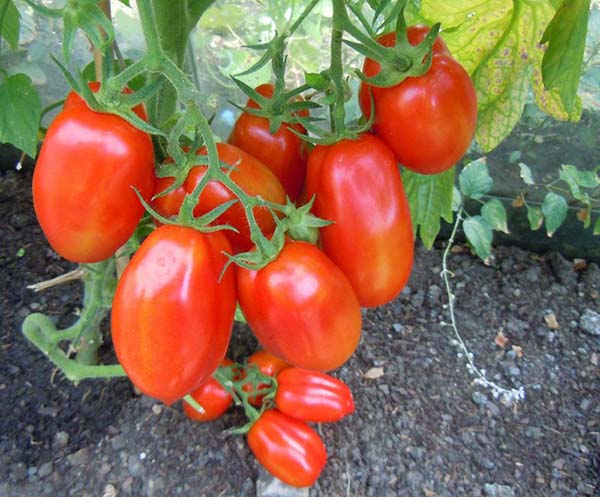
Thus, if you feed the tomatoes in the greenhouse correctly and on time, you will definitely be able to get a rich harvest of delicious and sweet tomatoes.
Video: what, when and how to feed tomatoes (in 2 parts)


remarkably detailed and understandable. thank you. first planting in the greenhouse.
Finally, I found an article on the mind, specific, now it is in the tabs, helped to draw up a feeding schedule, in many articles it is constantly about ash, but not a word about pH, Thank you